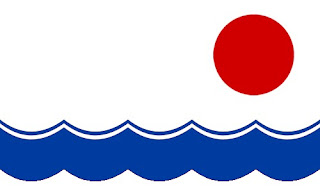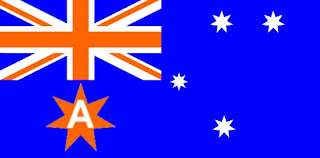Antarctica

This island of Antarctica was mapped out by the former Soviet Union in 1961. The colours of this flag are red, white, yellow and black. The design combines elements of the old socialist republics with colours of the Russian Imperial Flag.
However there is no hammer or sickle, instead the constellation Octans the Star Compass is shown. The eight pointed star represents the 'South Star.' Along the bottom are colours of Russian Empire but upside down, since this island is in the Southern Hemisphere. The white and yellow 'stripes' are shaped with a wavy design - doubly for the white stripe and singly for the yellow. While the black stripe is solid.




